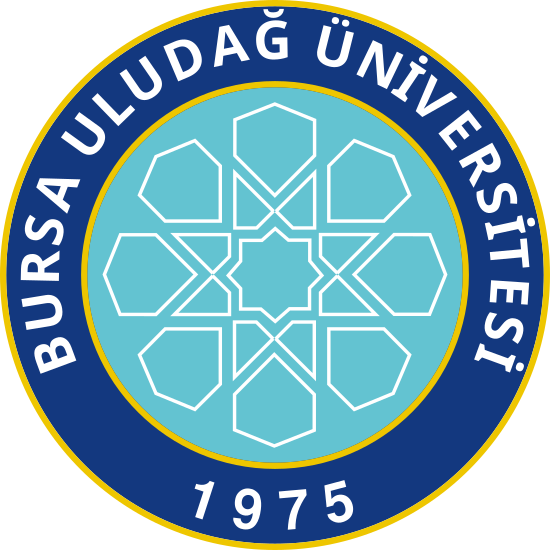Please use this identifier to cite or link to this item:
http://hdl.handle.net/11452/25079Full metadata record
| DC Field | Value | Language |
|---|---|---|
| dc.date.accessioned | 2022-03-16T08:51:57Z | - |
| dc.date.available | 2022-03-16T08:51:57Z | - |
| dc.date.issued | 2008-10-06 | - |
| dc.identifier.citation | Dağüstü, N. (2008). "Diallel analysis of anther culture response in wheat (Triticum aestivum L.)". African Journal of Biotechnology, 7(19), 3419-3423. | en_US |
| dc.identifier.issn | 1684-5315 | - |
| dc.identifier.uri | http://hdl.handle.net/11452/25079 | - |
| dc.description.abstract | The four wheat (Triticum aestivum L.) genotypes differing in their ability to produce embryogenic callus from anther culture were reciprocally crossed and inheritance of anther culture response [callus induction frequency (CIF, %), embryogenic callus induction frequency (ECIF, %), regeneration capacity of callus (RCC, %), plantlet regeneration frequency (PRF, %), green plantlet proportion (GPP, %) and green plantlet yield (GPY, %)] was investigated. The 12 F(1) hybrids and their parents were grown in field. It was analysed in the completely randomised design with 4 replications, each replication consisted of one petri dish with 100 anthers. Genotype significantly affected anther culture response for all the traits except GPP. General (GCA) and specific (SCA) combining ability effects were highly significant for CIF, ECIF and GPY, and indicated the existence of variability due to both additive and dominance epistasis gene effects. GCA/SCA ratio for CIF, ECIF, and GPY was higher than 1.0, indicating the importance of additive genetic variation in this genetic material. GCA effects among the parental lines were highest for Golia and lowest for Basribey. High x low responding crosses generated F(1)' s that were intermediate in response. Reciprocal effects (RE) were highly significant for CIF, ECIF and PRF, but generally less effective than additive and non-additive gene effects. The results from this study indicate that parents, which give rise to highly responsive hybrids, can be identified and that genetic improvement of hexaploid wheat is possible through selection. | en_US |
| dc.language.iso | en | en_US |
| dc.publisher | Academic Journals | en_US |
| dc.rights | info:eu-repo/semantics/closedAccess | en_US |
| dc.subject | Biotechnology & applied microbiology | en_US |
| dc.subject | Triticum aestivum | en_US |
| dc.subject | Anther culture | en_US |
| dc.subject | Cultivars | en_US |
| dc.subject | Diallel analysis | en_US |
| dc.subject | Triticum aestivum L. | en_US |
| dc.subject | İn-vitro | en_US |
| dc.subject | Regeneration | en_US |
| dc.subject | Callus | en_US |
| dc.subject | Crosses | en_US |
| dc.subject | Growth | en_US |
| dc.title | Diallel analysis of anther culture response in wheat (Triticum aestivum L.) | en_US |
| dc.type | Article | en_US |
| dc.identifier.wos | 000260457700005 | tr_TR |
| dc.identifier.scopus | 2-s2.0-54949154957 | tr_TR |
| dc.relation.publicationcategory | Makale - Uluslararası Hakemli Dergi | tr_TR |
| dc.contributor.department | Uludağ Üniversitesi/Ziraat Fakültesi/Tarla Bitkileri Bölümü. | tr_TR |
| dc.identifier.startpage | 3419 | tr_TR |
| dc.identifier.endpage | 3423 | tr_TR |
| dc.identifier.volume | 7 | tr_TR |
| dc.identifier.issue | 19 | tr_TR |
| dc.relation.journal | African Journal of Biotechnology | en_US |
| dc.contributor.buuauthor | Daǧüstü, Nazan | - |
| dc.contributor.researcherid | AAH-1582-2021 | tr_TR |
| dc.subject.wos | Biotechnology & applied microbiology | en_US |
| dc.indexed.wos | SCIE | en_US |
| dc.indexed.scopus | Scopus | en_US |
| dc.wos.quartile | Q4 | en_US |
| dc.contributor.scopusid | 24480308400 | tr_TR |
| dc.subject.scopus | Microspore; Anther Culture; Doubled Haploids | en_US |
| dc.subject.emtree | Androgenesis | en_US |
| dc.subject.emtree | Article | en_US |
| dc.subject.emtree | Callus culture | en_US |
| dc.subject.emtree | Diallel analysis | en_US |
| dc.subject.emtree | Embryogenic callus induction frequency | en_US |
| dc.subject.emtree | Gene replication | en_US |
| dc.subject.emtree | Genetic analysis | en_US |
| dc.subject.emtree | Genetic difference | en_US |
| dc.subject.emtree | Genetic epistasis | en_US |
| dc.subject.emtree | Genetic identification | en_US |
| dc.subject.emtree | Genetic variability | en_US |
| dc.subject.emtree | Genotype | en_US |
| dc.subject.emtree | Green plantlet proportion | en_US |
| dc.subject.emtree | Green plantlet yield | en_US |
| dc.subject.emtree | Hexaploidy | en_US |
| dc.subject.emtree | Hybrid | en_US |
| dc.subject.emtree | Nonhuman | en_US |
| dc.subject.emtree | Plantlet regeneration frequency | en_US |
| dc.subject.emtree | Regeneration capacity of callus | en_US |
| dc.subject.emtree | Wheat | en_US |
| Appears in Collections: | Scopus Web of Science | |
Files in This Item:
There are no files associated with this item.
Items in DSpace are protected by copyright, with all rights reserved, unless otherwise indicated.
